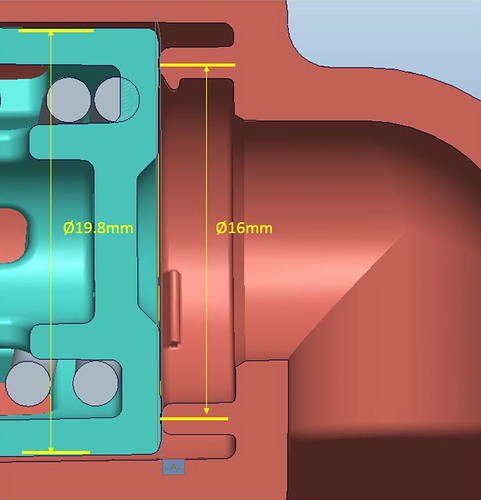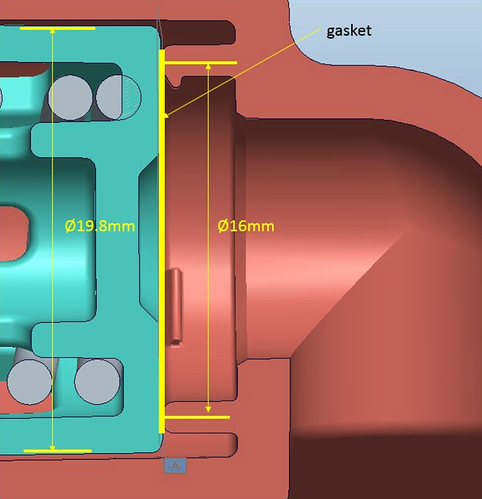QUESTION
Fluid flow pressure from the right side. The cylindrical valve attached to spring is supposed to open at a given pressure. In the picture below, what diameter to select to calculate the area to determine valve cracking pressure? 16mm or 19.8mm diameter? Theoretical there are 2 cracking pressure? I ask because test results shows something strange.
Below is a picture with gasket location to prevent leakage. In the test I recorded pipe wall tapping pressure gauge reading and hence static pressure. But do you think if the valve just cracks the velocity component of flow would have significant effect to consider total pressure? Will diameter 19.8mm determine the cracking pressure? Strange result from the test is that cracking pressure area is neither from 19.8mm nor from 16mm but from the average of above diameters. 19.8+16.0/2 = 17.9mm dia. Area equivalent to 17.9mm dia determines the cracking pressure. Am I missing something in physics?
REPLIES
SPDL310
There is only one cracking pressure. Your seal diameter is closer to 16mm. That will be your initial plug diameter. Once you crack your seal the plug diameter increases to the ID of the red body. I’m assuming that you have an O ring or seal ring that is not shown further back on the green surface. If not the plug diameter is then 19.8 mm. What sort of strange results are you getting? When calculating your cracking pressure are you assuming static pressure? If your fluid is moving you need to use total pressure in your calculation.
The velocity at cracking should not significantly affect your results if you are static prior to cracking. Just to be clear are you backing into a plug diameter from fitting pressure before your pressure drop? If so test your spring force it may not be the exact force you specified. The tolerance of your stack may be off due to over machining leading to less spring compression.
I think your issue is the valve cracked at a lower pressure than you expected it to. Your calculated pressure area at cracking pressure is above what you believed your seal area to be.
I will offer some additional speculation. You may not have considered the force required to seat your gasket at the geometry that you have shown therefore you lose pressure early due to an unseated gasket. Regardless of the direct cause of your low cracking pressure the solution is to add a stiffer spring or the proper amount of preloading to get the desired cracking pressure. You may want to switch to a smaller sealing surface to get a higher initial seating stress.
SOURCE
https://www.eng-tips.com/viewthread.cfm?qid=384633
Above is a snippet.

